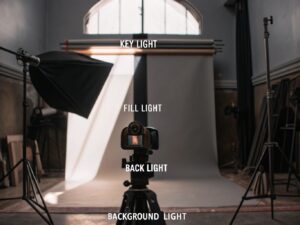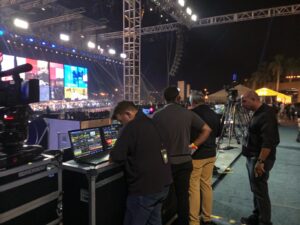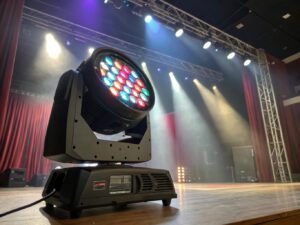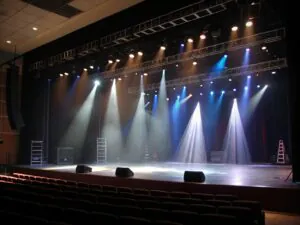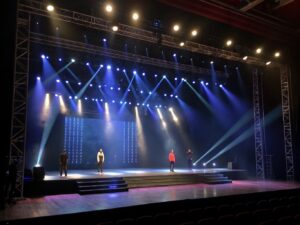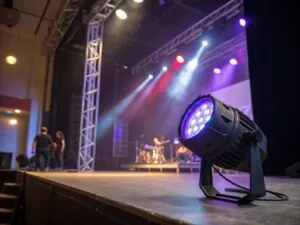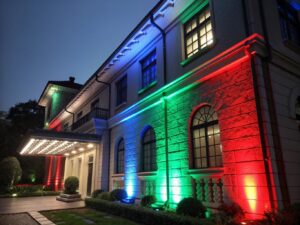
What are some advantages of using LED stage lighting?
Tired of hot, power-hungry lamps and limited colors? High energy bills and constant maintenance can dim your creativity. LED stage lighting is the game-changing solution you need.
LED stage lights offer huge advantages. They use less energy, last much longer, and produce very little heat. Plus, they offer a massive range of colors without needing gels, giving you incredible creative control1 and saving you money in the long run.

Those benefits are just the beginning. I've seen these changes firsthand over my 19 years in this industry. From my early days as a technician to leading Monalight, the shift to LED has been revolutionary. But to really understand their impact, we need to break down exactly what makes them so powerful. Let's dive deeper into their specific advantages and see how they can transform your next production.
What are the main advantages of using LED lighting?
Worried about high electricity bills and the safety risks of hot fixtures? The constant costs and potential hazards from old lamps are a real headache. LED lighting offers a safer, more cost-effective alternative.
The main advantages are energy efficiency2, a long lifespan, and low heat output. They consume up to 80% less power than traditional bulbs and can last for tens of thousands of hours. This means lower costs, less maintenance3, and a much safer working environment for everyone.

These three advantages work together to completely change how you manage a show. I remember being on tour and spending the first hour at every new venue just replacing burned-out PAR can lamps. That's time and money lost before you even start focusing lights. With LEDs, that maintenance cycle is almost gone. A fixture with a 50,000-hour lifespan can run for years without needing a single replacement. This 'fit and forget' approach means technicians like Nick can spend their time on what matters: the creative design. The low power draw is also huge. In older theaters or on mobile setups, power is always limited. With LEDs, you can power an entire rig on the same circuit that would only handle a few tungsten fixtures. This opens up bigger and better designs without needing expensive power upgrades.
A Closer Look at Core Benefits
| Feature | Traditional Halogen Light | Modern LED Light |
|---|---|---|
| Power Use | High (e.g., 575W) | Very Low (e.g., 90W) |
| Lifespan | Short (~1,000 hours) | Very Long (20,000 - 50,000 hours) |
| Heat Output | Extremely High | Very Low |
| Maintenance | Frequent Lamp Changes | Minimal to None |
What is one advantage of LED lighting in modern theater?
Struggling to create dynamic color changes with clumsy gels? The time and limitations of physical filters can frustrate any creative vision. LED lighting offers instant, unlimited color possibilities from a single fixture.
If I have to pick just one advantage for theater, it's the incredible color mixing capability4. A single LED fixture can produce millions of hues instantly without gels. This allows for seamless color fades, strobes, and dynamic effects that were once impossible, revolutionizing theatrical design.
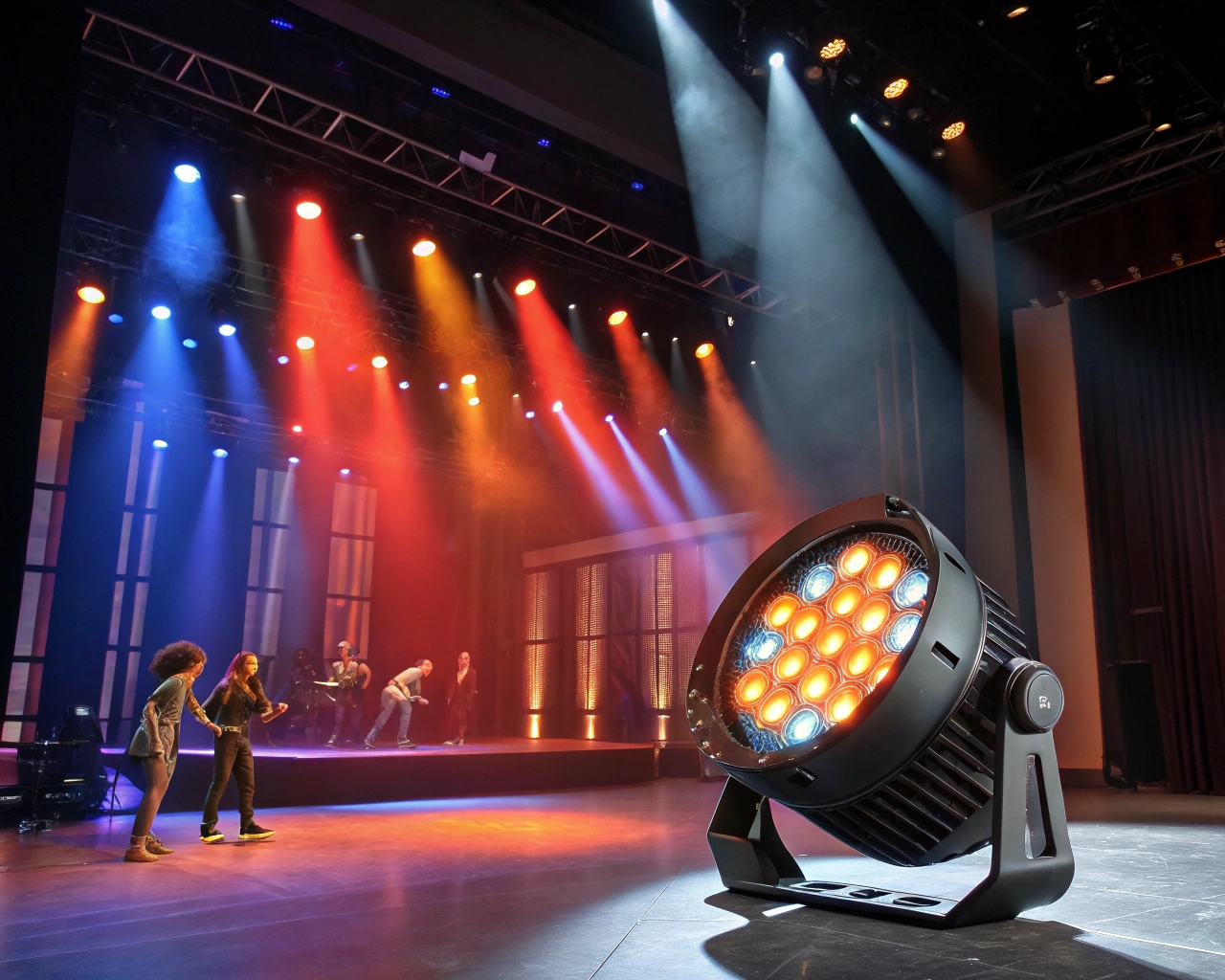
This single feature changes everything for a designer. Before, if you wanted to change a light from blue to red, you had two options. You could use a physical color scroller, which was noisy and slow, or you had to hang two separate lights. That meant more fixtures, more cables, more power, and more weight on the rig. For smaller theaters or tours, this was often impossible. Now, a single RGBW (Red, Green, Blue, White) LED fixture can do it all. You can snap from a deep blue to a vibrant magenta instantly. You can create a slow, 30-second crossfade from a warm amber to a cool lavender. This level of control gives the designer an incredible palette. It allows the lighting to become a dynamic part of the storytelling, reacting to the mood and action on stage in real-time. It’s the single biggest leap forward for creative stage lighting that I've seen in my career.
Beyond Gels: The Power of Additive Color Mixing
The magic is in how LEDs create color. Instead of a white light filtered by a colored gel, an LED fixture mixes light from individual diodes. An RGB fixture combines Red, Green, and Blue light to create millions of other colors. More advanced fixtures add extra diodes like Amber, White, or Lime (RGBAW/L) to create better pastels, warmer tones, and a more natural-looking white light. This gives designers pinpoint control over the exact shade they want.
What are LED stage lights used for?
Unsure which light to use for a specific effect on stage? Using the wrong tool can ruin the look, creating uneven washes or weak spots. LEDs now cover every application imaginable.
LED stage lights are used for everything. This includes broad stage washes, focused spotlights on actors, creating dynamic moving effects, and lighting backdrops (cycs). Their versatility means you can find an LED equivalent for nearly any traditional fixture, from PAR cans and Fresnels to moving heads.
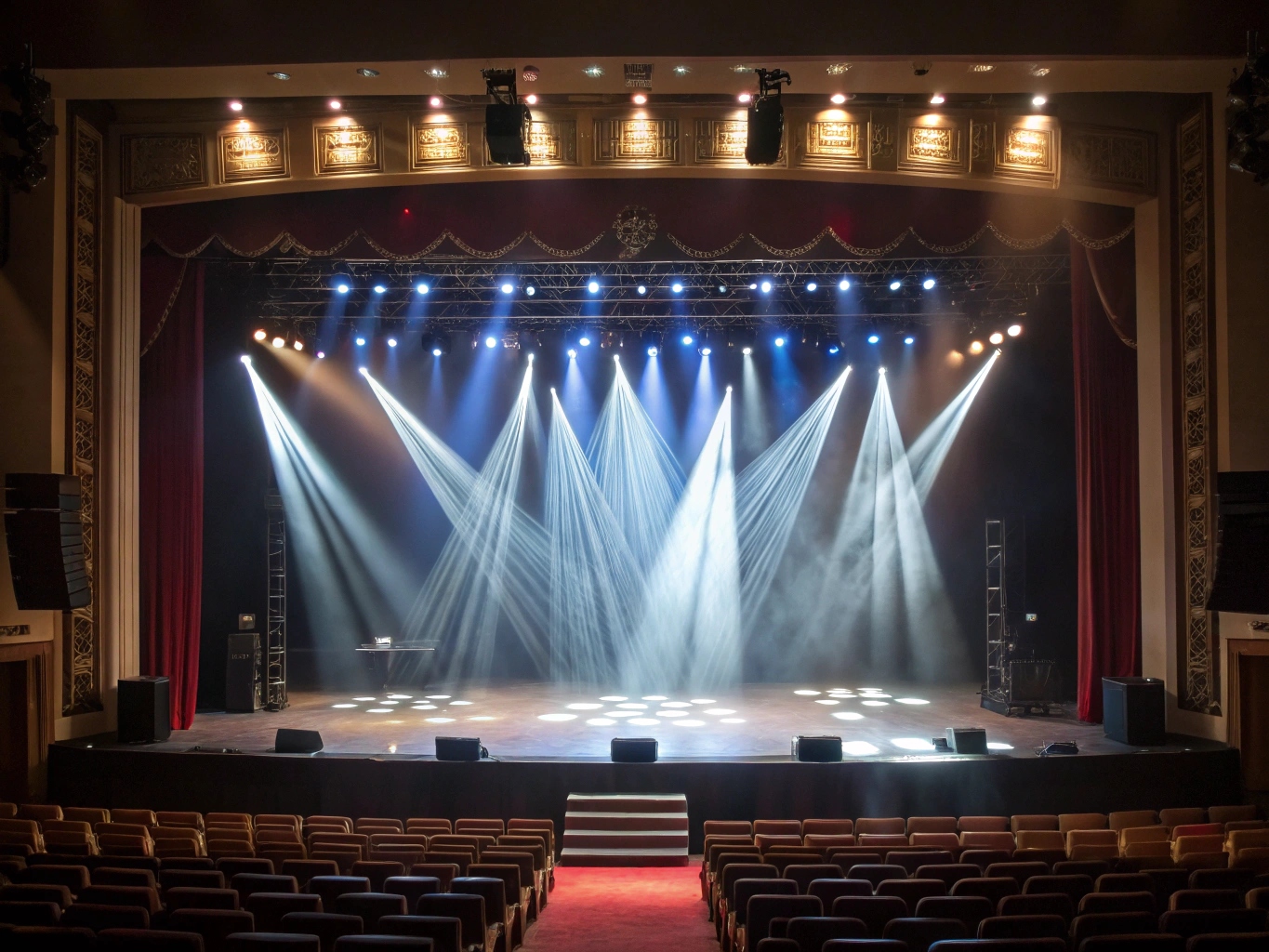
Today, there is an LED solution for every job on stage. This wasn't true ten years ago, but the technology has advanced incredibly fast. Now, when I help a client design a new rig, we can build it entirely with LED fixtures without compromising on quality or function. This simplifies everything from power distribution5 to maintenance. For a technician like Nick, it means having a versatile toolkit. The same moving head can act as a sharp gobo projector in one scene and a wide wash light in the next. This flexibility is invaluable, especially for productions that move between different venues. The core jobs of stage lighting haven't changed, but the tool we use to accomplish them has become infinitely more powerful and efficient thanks to LED technology6. It's about having the right tool for the job, and now, that tool is almost always an LED.
The Right LED for the Job
- Wash Lighting: For bathing the stage in color, we use LED PAR cans or linear battens. They provide broad, even coverage.
- Spotlighting: For highlighting a performer, LED profile spots (like a Leko) or Fresnels are perfect. They offer sharp, controlled beams with shutters for precise shaping.
- Effects Lighting: This is where LED moving heads shine. They can be programmed to move, change color, and project patterns (gobos), creating the most dynamic looks in a show.
- Backdrop Lighting: To light a cyclorama or backdrop, we use LED cyc lights. These are designed to create a smooth, seamless gradient of color from top to bottom.
What is an LED and its advantages and disadvantages?
Everyone says LED is the future, but it's not a magic bullet. Choosing the wrong LED fixture can lead to poor color or reliability issues. Understanding the pros and cons is key.
An LED (Light Emitting Diode) is a semiconductor that emits light when electricity passes through it. Its main advantages are efficiency, long life, and durability. The primary disadvantages can include a higher initial cost and potential for poor color rendering (CRI) in cheaper fixtures.
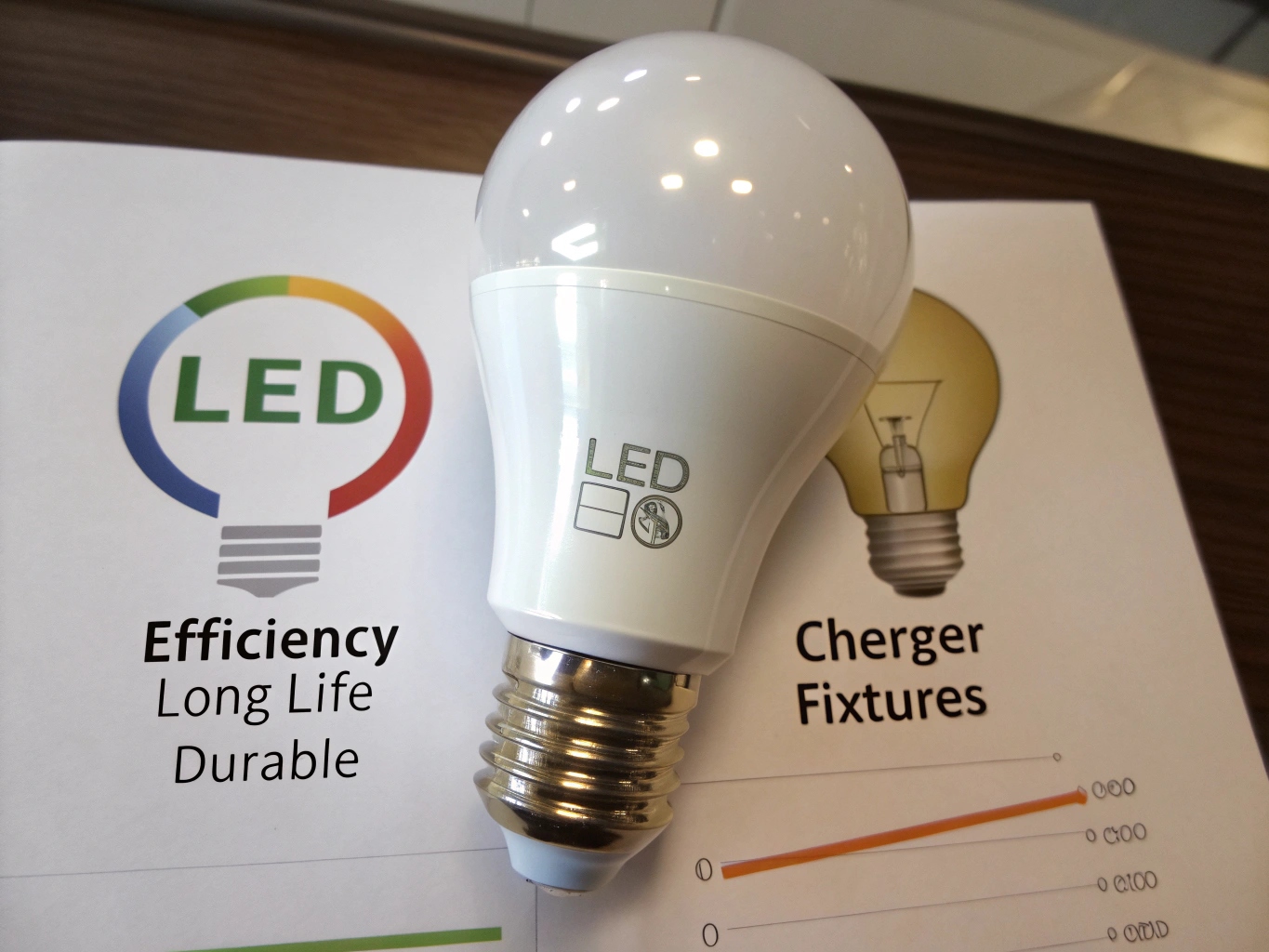
Unlike a traditional bulb that heats a fragile filament until it glows, an LED creates light through a solid-state process. This is why they are so much more durable and efficient. However, not all LEDs are created equal. The biggest challenge for a long time was creating a good quality white light. This is measured by the Color Rendering Index7, or CRI. A low CRI light can make skin tones look green or costumes appear dull. This is where quality matters. At Monalight, we obsess over the diodes we source because we know that a designer's vision depends on true, accurate color. The higher initial cost is a real factor, but it's an investment. When you calculate the savings on electricity and replacement lamps over a few years, a quality LED fixture almost always pays for itself.
Weighing the Pros and Cons
| Pros | Cons |
|---|---|
| Energy Efficient: Uses up to 80% less power. | Higher Initial Cost: More expensive to buy upfront. |
| Long Lifespan: Lasts for tens of thousands of hours. | Color Rendering (CRI): Cheaper units can have poor color quality. |
| Low Heat: Safer for performers and technicians. | Complex Electronics: Drivers and power supplies can fail. |
| Color Control: Instant, dynamic color mixing without gels. | Dimming Issues: Cheaper models may not dim smoothly to zero. |
| Durable: No filaments to break, very robust. |
Conclusion
In summary, LED stage lighting offers unmatched efficiency, creative freedom, and long-term value. It's a smart investment that transforms what's possible on any stage.
-
Understand how LED lighting provides designers with unprecedented creative control. ↩
-
Learn how energy efficiency can significantly reduce costs and improve performance in stage lighting. ↩
-
Find out how LED lighting minimizes maintenance needs and saves time and money. ↩
-
Delve into the innovative color mixing capabilities of LED lights that enhance creative designs. ↩
-
Learn how LED lighting can streamline power distribution in stage setups. ↩
-
Explore the latest advancements in LED technology that enhance stage lighting capabilities. ↩
-
Learn about CRI and its importance in achieving accurate color representation in lighting. ↩
You may also be interested in:
